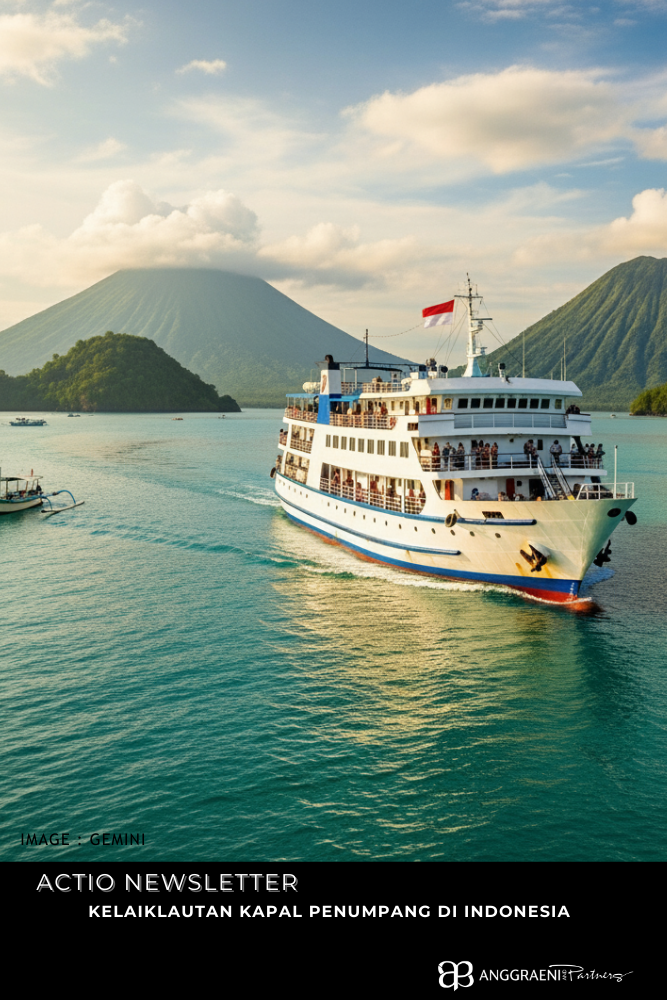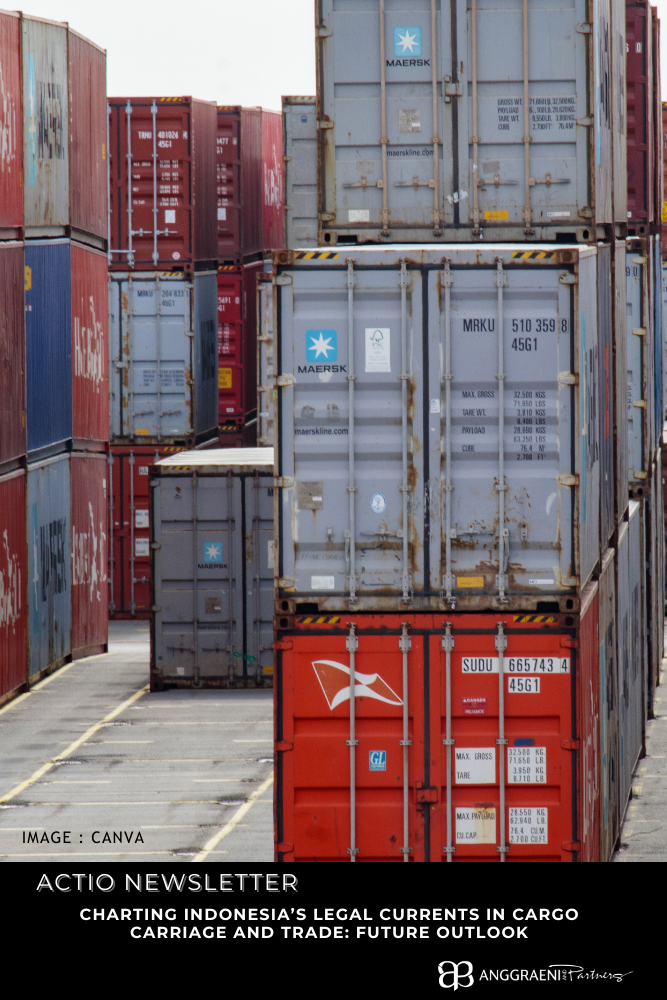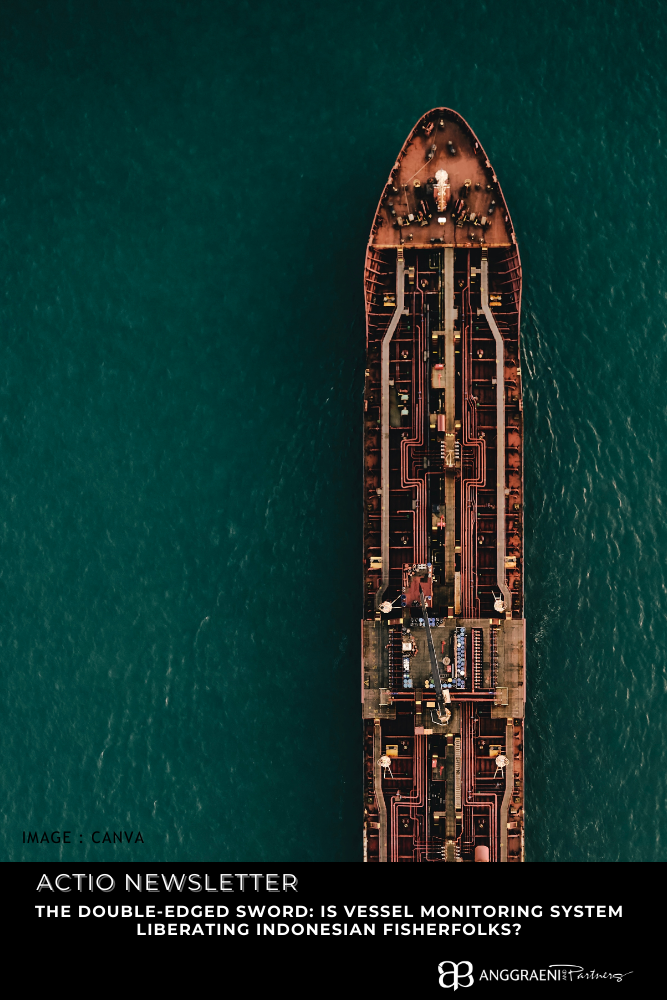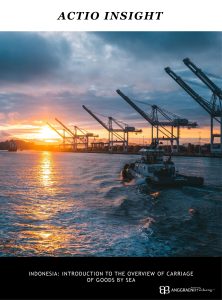Indonesia: Introduction to The Overview of Carriage of Goods by Sea
By : Setyawati Fitrianggraeni , Reynalda Basya Ilyas and Fildza Nabila Avianti[1]
1. Introduction
It is important to identify the distinguishing features in the important documents commonly use in the carriage of goods by sea. First, there is the contract of carriage under which one party agrees to carry the shipment of goods for another party. Second, there is a charter party agreement in which the carrying capacity of a ship is placed by one person at the disposal of another. Third, a bill of lading which is a shipping document that covers the carriage of goods.
The parties involved shall be:[2]
- Shipper: the party who has contracted with the carrier for the carriage of goods. This may be the buyer of the seller under the contract of sale, depending on who has the responsibility for contracting for carriage.
- Carrier: the party who has been contracted to carry the goods, which may be the shipowner of the charterer depending on the circumstances.
- Consignor: the party who delivers the goods to the carrier at the port of shipment.
- Consignee: the party to whom the goods are to be delivered at the port of destination.
- Shipowner: the owner of the vessel on which the goods are carried.
2. Legal Framework
The prevailing main regulation on shipping in Indonesia in general is regulated under Law No. 17 of 2008 on Shipping (“Shipping Law”), revoking the previous law that was issued in 1994. The Shipping Law was last amended by Law No. 11 of 2021 on Job Creation. Article 38 (1) and (2) and the elucidation of the law stipulate that a shipping company is obliged to carry passengers and/or goods that are governed by a contract of carriage, that is supported with other carriage by sea transportation documents that are set out in international convention and national laws, among others is the Bill of Lading.
The statutory law governing private contracts which shall include a contract of carriage if it is made based on Indonesian Law, is the Indonesian Civil Code (Burgelijk Wetboek voor Indonesie). The code provides the substantive aspects of contracts covering the requirements for the validity of the contract, the effect of an agreement, interpretation of an agreement, termination of an agreement, and terms of a sale and purchase agreement including the obligation of the seller and buyer.
The legislative framework that specifically governs a contract of carriage is stipulated under Article 468 (1) of the Indonesian Commercial Code/ Wetboek van Koophandel voor Indonesie (“ICC”) which stipulates that a contract of carriage obliges the carrier to secure the goods that must be carried, from receipt of the goods until the handover. The definition of charter parties is stipulated under Article 453-465 in the ICC. For instance, Article 453 of the ICC defines a time charter as an agreement in which one party (the party who loans out the ship) binds himself to supply the use of a ship for the other party (the party who charters), to be used for sailing, with the payment calculated according to the length of time. A voyage charter is defined differently from the foregoing in the following context; in a voyage charter, (i) the lease over the ship could be for in part or in entirety, (ii) the use is for carriage of goods or passengers, (iii) the voyage could be for one or more journey, and (iv) with a fixed price. On the other hand, a bareboat (demise charter) is recognized under the Shipping Law in the context of maritime claim and arrest of ships mentioned in the elucidation of Article 223 (1) of the law.
Whereas for a bill of lading, it is explained that under Article 504 to 506 of the ICC: (i) the shipper could request to the carrier for a receipt of goods and to provide the required information, and the carrier shall issue a bill of lading, (ii) captain has the right to issue a bill of lading unless it is assigned to others, and (iii) bill of lading is a dated document, in which the carrier stipulates that it has received the goods to be carried to a destination to be given to an individual based on certain terms. The individual concerned could be mentioned by their name or mentioned as the designated person by the shipper or by a third party.
Indonesia has several implementing regulations on shipping, such as Government Regulation No. 20 of 2010 on Marine Transportation and Government Regulation No. 51 of 2002 on Shipping. Both mentioned regulations have been amended with Government Regulation No. 31 of 2021 on the Operation of the Shipping Sector which does not specifically regulate the abovementioned subject matter and regulates more on the public aspect of the management of shipping such as on the operation of ship in Indonesian waters, seaworthiness of the ship and authorities of the public instances.
3. Particulars of General Practice
1. Charterparties
- Laytime is the time allowed for loading and discharging operations.
- Demurrage is a form of liquidated damages for breaching the laytime as stated in the governing contract, the charter party.[3] In simple terms, demurrage is the charges that the charterer pays to the ship owner for its delayed operations of loading/unloading.
- Detention (diem charges) refers to the charge that the merchant pays for the use of the container outside of the terminal or depot, beyond the free time period. Once a container discharged from a vessel is taken from the port to the customer’s premises and offloaded, the empty container (also called empties), must be returned to the port from where it has been picked up or to the empty container depot. The carrier could start charging the customer if the latter failed to return the empty container as agreed. This is what is called detention charges or detention fees. Like demurrage, it is also charged per container per day.
- Laycan is the term used to describe further provision in the charter which sets out the earliest day on which laytime may commence and the latest time by which the ship must present itself as ready for loading at the port in question.[4] The time difference between these dates is called the ‘spread’. It may vary between a couple of days and a couple of weeks—but it is usually shorter.[5]
- NoR (Notice of Readiness): One of the requirements to commence laytime that the owners must fulfill is to give a valid notice of readiness (NoR).[6] The NoR informs the charterer that the ship is ready to load or discharge. The date and time of the NoR determine when the laytime is ready to commence.[7] In common law, NoR is required only at the loading port, not at the discharge port. But charters usually provide that a NoR be given at each port and set out when, how, and to whom the NoR is to be given.
2. Bills of lading[8]
Consignee: Bills of lading are drawn either to order, when negotiated against a letter of credit, or to the name of the party to whom the goods are consigned and who has direct claim to the goods as soon as he is in possession of a signed “negotiable” copy of the bill of lading.[9]
- Port of loading: the port of loading is usually the port at which the goods are loaded into the vessel.[10]
- Ship: the same of the vessel in which the cargo is loaded.
- Port of discharge: this is the port where ocean vessel discharges the goods.[11]
- Bill of lading date: this is usually the date when the bill of lading is signed. Shippers often require that the date should be the day on which the goods are loaded, which is earlier than the date of signature.[12]
- The number of signed negotiable copies: The bill of lading must state how many negotiable copies have been signed.[13]
- The terms and conditions of carriage: Conditions to clearly describe and control the goods being shipped.[14]
Bibliography
Laws and Regulations
Law No. 17 of 2008 on Shipping Law
Law No. 11 of 2021 on Job Creation
Indonesian Civil Code
Indonesian Commercial Code
Government Regulation No. 31 of 2002 on The Operation of The Shipping Sector
United Nations (1971) “Bills of Lading,” Secretariat of UNCTAD.
Books
John Schofield, Laytime and Demurrage (Taylor & Francis 2013).
Attard, David Joseph, The IMLI Manual on International Maritime Law (Oxford, 2016).
Aikens, Richard; Lord, Richard; Bools, Michael, Bills of Lading (Second edn, 2016), Informa Law from Routledge, Lloyd’s Shipping Law Library.
William Rodney Long and Aaron lane Cricher, Uniform Through Export Bill of Lading (University of Illinois at Urbana-Champaign, US Government Printing Office 1928).
Brian W. Clarke, Handbook of International Credit Management, (Taylor & Francis 2018) 220.
Andrew Tettenborn and Baris Soyer, International Trade and Carriage of Goods (Taylor & Francis 2016)
Official Publications
US Department of Transportation, Glossary of Shipping Terms (US Department of Transportation Maritime Administration 2008).
Maurice Ward Group, Shipping Terms & Glossary (2021), https://www.mauriceward.com/wp-content/uploads/2021/06/MWG-SHIPPING-TERMS-AND-GLOSSARY.pdf, accessed on 11 March 2023.
DISCLAIMER
The information contained in this Legal Insight is not intended to provide legal opinion or views of the Anggraeni and Partners law offices against a particular legal issue.
Neither party may assume that he or she should act or cease to act or choose to act on a particular matter based on this information without seeking advice from professionals in the field of law in accordance with certain facts and circumstances it faces.
For further information, please contact:
WWW.AP-LAWSOLUTION.COM
P: 6221. 7278 7678, 72795001
H: +62 811 8800 427
S.F. Anggraeni
Managing Partner
fitri@ap-IawsoIution.net
Reynalda Basya Ilyas
Senior Associate Practice Group Domestic Civil Litigation
reynalda.bi@ap-lawsolution.net
Fildza Nabila Avianti
Research Associate Ocean Maritime
Fildza.na@ap-lawsolution.net
Footnotes :
[1] Setyawati Fitrianggraeni is Managing Partner at Anggraeni and Partners, Indonesia, Assistant Professor at the Faculty of Law University of Indonesia, and PhD Candidate at the World Maritime University, Malmo, Sweden, Reynalda Basya Ilyas is Senior Associate from Practice Group Domestic Civil Litigation and Fildza Nabila Avianti is Research Associate from Ocean-Climate Research Group at Anggraeni and Partners. Writers thanks to Dr. Hary Elias for his time to provide feedback to the article
[2] Kornet, D.N. (2018) “An Introduction to Contract for the Carriage of Goods by Sea: The Hague Visby Rules,” Maastricht University, p. 2.
[3] John Schofield, Laytime and Demurrage (Taylor & Francis 2013) 6.
[4] Attard, David Joseph, The IMLI Manual on International Maritime Law (Oxford, 2016).
[5] Ibid.
[6] Ibid, p. 285
[7] Ibid.
[8] United Nations (1971) “Bills of Lading,” Secretariat of UNCTAD, p. 6.
[9] Aikens, Richard; Lord, Richard; Bools, Michael, Bills of Lading (Second edn, 2016), Informa Law from Routledge, Lloyd’s Shipping Law Library.
[10] US Department of Transportation, Glossary of Shipping Terms (US Department of Transportation Maritime Administration 2008)
[11] Maurice Ward Group, Shipping Terms & Glossary (2021), https://www.mauriceward.com/wp-content/uploads/2021/06/MWG-SHIPPING-TERMS-AND-GLOSSARY.pdf, accessed on 11 March 2023.
[12] William Rodney Long and Aaron lane Cricher, Uniform Through Export Bill of Lading (University of Illinois at Urbana-Champaign, US Government Printing Office 1928) 24.
[13] United Nations Conference on Trade and Development Secretariat, Bills of Lading (1971) 6., See also Brian W. Clarke, Handbook of International Credit Management, (Taylor & Francis 2018) 220.
[14] Andrew Tettenborn and Baris Soyer, International Trade and Carriage of Goods (Taylor & Francis 2016) 290.




